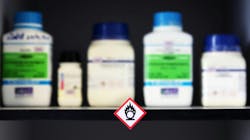US Stepping Up Protection from Harmful Chemicals
The flurry of regulations regarding chemical safety in April was a bit unusual.
These actions have politics written all over them. “It’s an election year, and the Biden Administration must get new rules finalized on the books well before November, or new rules will be easy for the next president to overturn if Biden loses his re-election bid,” observed Lynn Bergeson, managing partner of Washington law firm Bergeson & Campbell PC, according to IndustryWeek.
A timeline for events in April is as follows:
· On April 10, the EPA issued a final rule to create a drinking water standard to protect communities from exposure to harmful per- and polyfluoroalkyl substances (PFAS), also known as ‘forever chemicals.’ The government said that exposure to PFAS has been linked to deadly cancers, impacts the liver and heart, and can cause immune and developmental damage to infants and children. The rule will “reduce PFAS exposure for approximately 100 million people, prevent thousands of deaths, and reduce tens of thousands of serious illnesses,” the EPA said.
· On April 19, the EPA classified two widely used PFAS chemicals—perfluorooctanoic acid (PFOA) and perfluorooctanesulfonic acid (PFOS)—as hazardous substances under the Comprehensive Environmental Response, Compensation, and Liability Act. Additionally, the EPA noted that it will put effort into enforcement, singling out companies who have either manufactured PFAS or used them in the manufacturing process as well as federal facilities, and other industrial parties.
· And on April 24, the EPA finalized a ban on most uses of methylene chloride, a dangerous chemical known to cause the following cancers—liver, lung, breast, brain, blood and cancer of the central nervous system—as well as neurotoxicity, liver harm and even death. There are varying degrees of the ban since methylene chloride will still be needed to make refrigerants and electric vehicle batteries. And there are exceptions for critical military or other federal uses. However, for this specific chemical companies are required to monitor worker use, as well as provide training and PPE for those exposed to the chemical.
While these actions all happened in April, back in January the EPA finalized a rule that prevents companies from the manufacture or processing of some 329 inactive PFAS, according to Wastewater Digest.
These rules represent important steps in protecting workers and communities from the harmful effects of some chemicals; however, continued attention needs to occur. One such area is the chemicals in plastic. According to a study reported by Chemical Processing, harmful chemicals in plastics including PFAS resulted in approximately $250 billion in increased healthcare costs for the U.S. in 2018. This was from a study released in 2024 funded by the National Institute of Health and Passport Foundation. The study showed that endocrine-disrupting chemicals (EDCs) in plastics are linked to cancer, diabetes and various endocrine diseases.
To get a general idea of the impact of these harmful chemicals, OSHA provides the statistics that workers suffer more than 190,000 illnesses and 50,000 deaths annually related to chemical exposures. They note the harm comes from various cancers including lung, kidney, skin, heart, stomach, brain, nerve, and reproductive diseases. These numbers come from OSHA’s Toolkit for Employers and Workers.
The toolkit offers a variety of advice on how to manage this issue, but most important is OSHA’s advice to move to safer chemicals. For example, OSHA cites the case of Washing Systems LLC, a chemical supplier to the laundry industry, which sought to make detergent free of nonylphenol ethoxylates (NPE). Within two years of announcing these initiatives, the company was able to manufacture chemicals that were 100% free of NPE.
If all sectors of industry would take their cue from Washing Systems and the many others who have gone down this path, and develop alternatives to harmful chemicals, workers would not need to rely on the regulatory climate and its political whims.
About the Author
Adrienne Selko
Senior Editor
Email [email protected]
Adrienne Selko is also the senior editor at Material Handling and Logistics and is a former editor of IndustryWeek.

